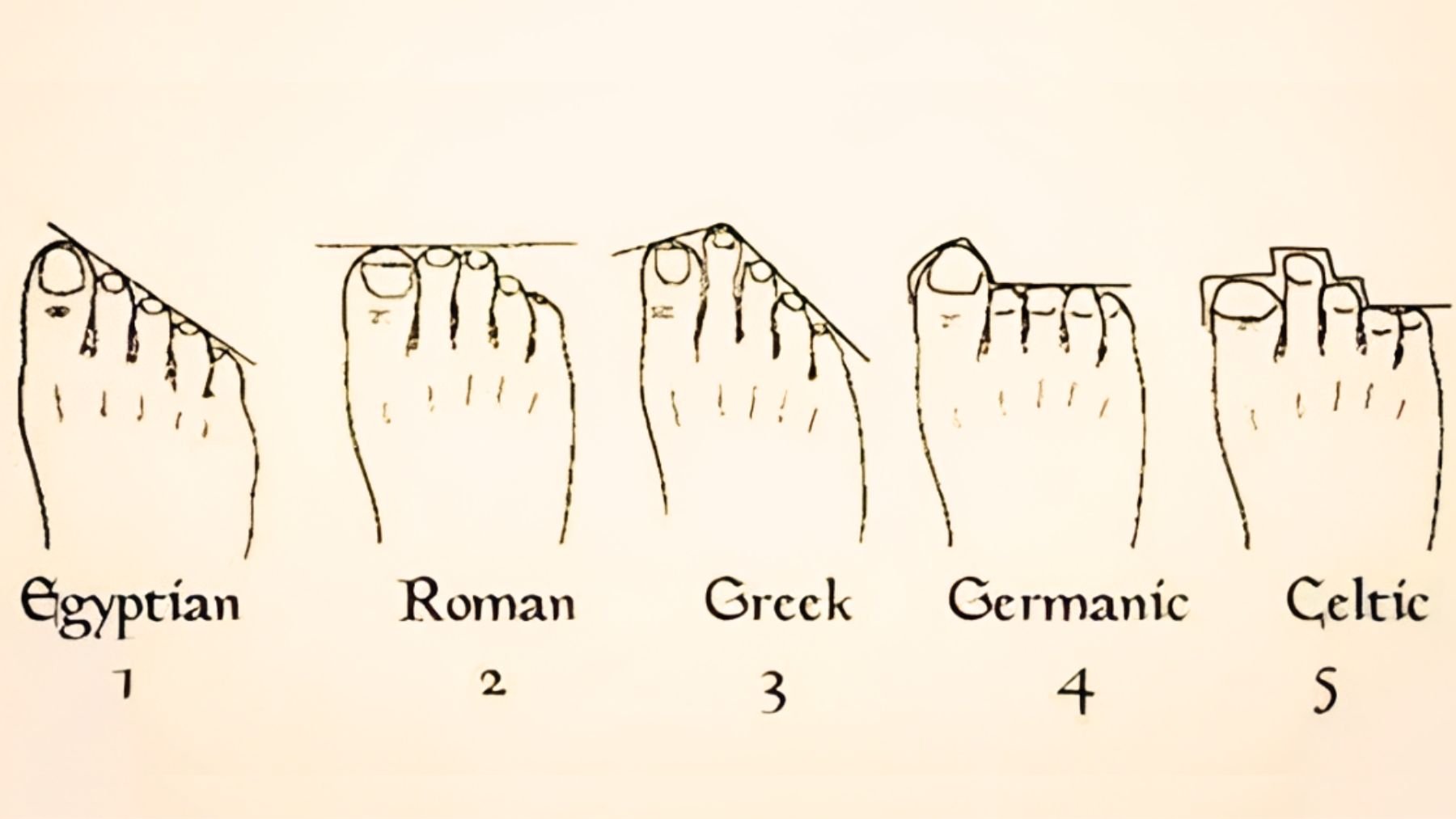We often think of personality tests involving gestures, handwriting, or even sleeping positions, but what about your feet? The shape of your toes may hint at the way you think, behave, and interact with the world.
This psychological test takes a playful look at how foot shape might reflect certain personality traits. It’s not a science-backed diagnosis, but it’s an interesting way to consider patterns in how people think and feel. Take a look at your foot and see which of the following shapes matches yours most closely.
What your foot shape might say about your personality
Each foot shape is linked to a general personality type based on the size and alignment of your toes. These aren’t hard rules, but you might recognize parts of yourself in one of these descriptions. Let’s break them down.
The Egyptian foot
If your toes slant downward from the big toe to the pinky in a straight line, you have what’s known as the Egyptian foot. People with this shape tend to be deep thinkers who crave quiet, meaningful moments. They’re drawn to reflection and often need alone time to recharge.
They usually avoid the spotlight but are highly perceptive and emotionally aware. This shape is often associated with people who journal, meditate, or feel grounded by spiritual or philosophical ideas. On the downside, they can get stuck in their own heads and may take longer to make decisions.
The Roman foot
This shape features the first three toes as roughly the same length, with the last two gradually shorter. It’s a shape commonly seen in statues from ancient Rome—hence the name—and is linked with natural confidence and leadership.
People with Roman feet tend to be pragmatic, diplomatic, and fair. They’re the ones others turn to when decisions need to be made or tensions need easing. While they’re typically well-balanced in how they manage emotions and situations, they can also come off as overly assertive or unwilling to bend.
The Greek foot
A long second toe that extends noticeably beyond the big toe defines the Greek foot. This shape is often connected to people who are energetic, enthusiastic, and constantly in motion—physically or mentally.
Those with Greek feet tend to be great at brainstorming, leading group projects, or rallying friends around a new idea. They’re often seen as optimistic and full of life, but their fast-paced minds can sometimes jump ahead before the details are sorted out, leading to unfinished plans or impulsive choices.
The Germanic foot
This foot is wider, with toes that are close in length and set in a straight, square shape. It’s less common but easy to recognize. People with Germanic feet are usually no-nonsense types who approach life with logic and structure.
They may not open up quickly, but they’re reliable, consistent, and keep their promises. These are the types who keep the house organized, remember birthdays, and have a plan for almost everything. While they might not thrive in chaotic or creative environments, they’re often the glue that holds teams and families together.
The Celtic foot
This foot shape stands out with a second toe that’s longer than the big toe and uneven lengths for the rest. It’s often seen as a sign of a free thinker, someone who values creativity, independence, and originality above convention.
People with Celtic feet are the ones coming up with unusual solutions, chasing big ideas, or switching careers to follow their passion. They resist routines that feel too rigid and feel comfortable when they have room to experiment. While this mindset can lead to scattered focus, it also sparks innovation. If you have this foot shape, there’s a good chance you’re more creative than most.
